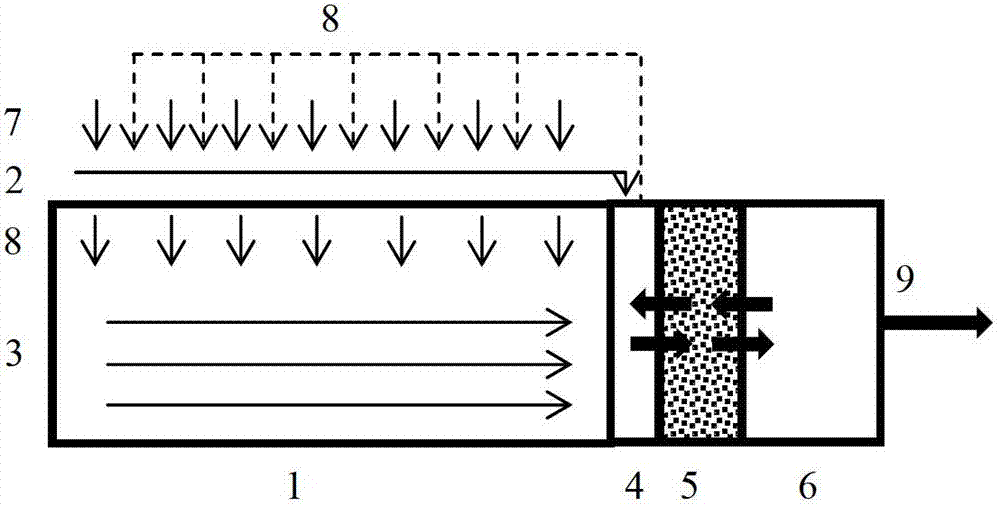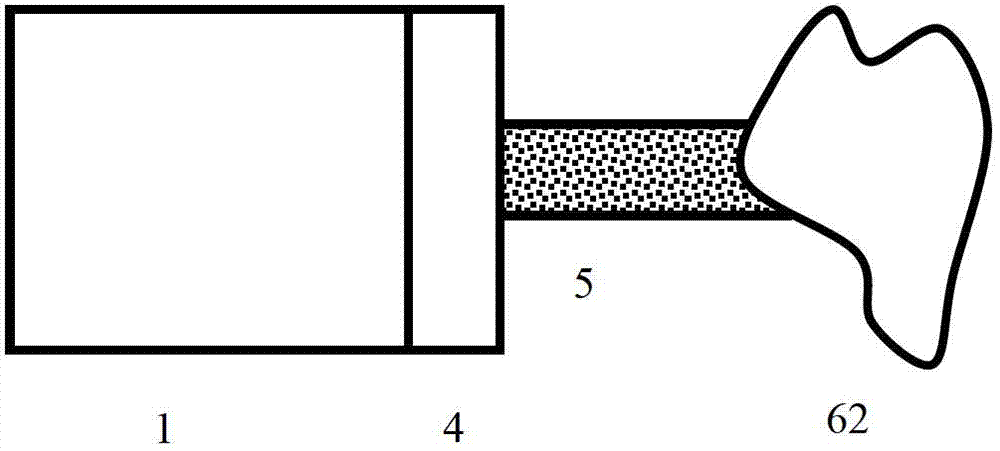Farmland nitrogen and phosphorous non-point source pollution control and recycle system, and method thereof
A non-point source pollution and farmland technology, which is applied in waterway systems, adsorption water/sewage treatment, drainage structures, etc., can solve the problems of N and P element resource utilization, achieve high pollution control efficiency, improve utilization rate, and prevent The effect of eutrophication
- Summary
- Abstract
- Description
- Claims
- Application Information
AI Technical Summary
Problems solved by technology
Method used
Image
Examples
Embodiment 1
[0034] This embodiment is suitable for areas with less rainfall (such as figure 2 shown).
[0035] Using the existing main canal 61 as a water storage facility, excavate a rectangular ditch with a length of 20m, a width of 2m, and a depth of 10m between the farmland 1 and the main canal 61, perpendicular to the runoff direction, and fill it with a particle size distribution within the range of 0.02-2mm. The modified diatomite N, P composite adsorbent between them constitutes the adsorption unit 5. Before the adsorption unit 5, a group of wells 41 with a depth of 10m, a radius of 1m, and an interval of 5m are dug to form a water collection facility. When the surface runoff is generated, no surface runoff overflows the adsorption unit, and all of it is collected in the well group 41, and then flows slowly through the adsorption unit. Part of the underground runoff flows through the adsorption unit slowly and slowly, and part of it is collected in the well group 41, and then s...
Embodiment 2
[0040] This embodiment is suitable for areas with greater rainfall (such as image 3 shown).
[0041] Using the existing small reservoir 62 as a water storage facility, between the farmland 1 and the small reservoir 62, a rectangular trench with a length of 30 m, a width of 2 m, and a depth of 8 m is excavated perpendicular to the runoff direction of the farmland to form a water storage facility 4. A rectangular ditch with a width of 3 m, a length of 40 m, and a depth of 8 m is excavated perpendicular to the ditch, and filled with an organic-inorganic attapulgite-based high-efficiency nitrogen-phosphorus composite adsorbent with a particle size distribution in the range of 0.5-5 mm to form an adsorption unit 5 . The surface runoff and underground runoff are all collected in the rectangular ditch, and then seep quickly through the adsorption unit. When flowing through the adsorption unit, N and P are adsorbed and cannot be discharged out of the farmland with the water flow. Th...
PUM
 Login to View More
Login to View More Abstract
Description
Claims
Application Information
 Login to View More
Login to View More - R&D
- Intellectual Property
- Life Sciences
- Materials
- Tech Scout
- Unparalleled Data Quality
- Higher Quality Content
- 60% Fewer Hallucinations
Browse by: Latest US Patents, China's latest patents, Technical Efficacy Thesaurus, Application Domain, Technology Topic, Popular Technical Reports.
© 2025 PatSnap. All rights reserved.Legal|Privacy policy|Modern Slavery Act Transparency Statement|Sitemap|About US| Contact US: help@patsnap.com



